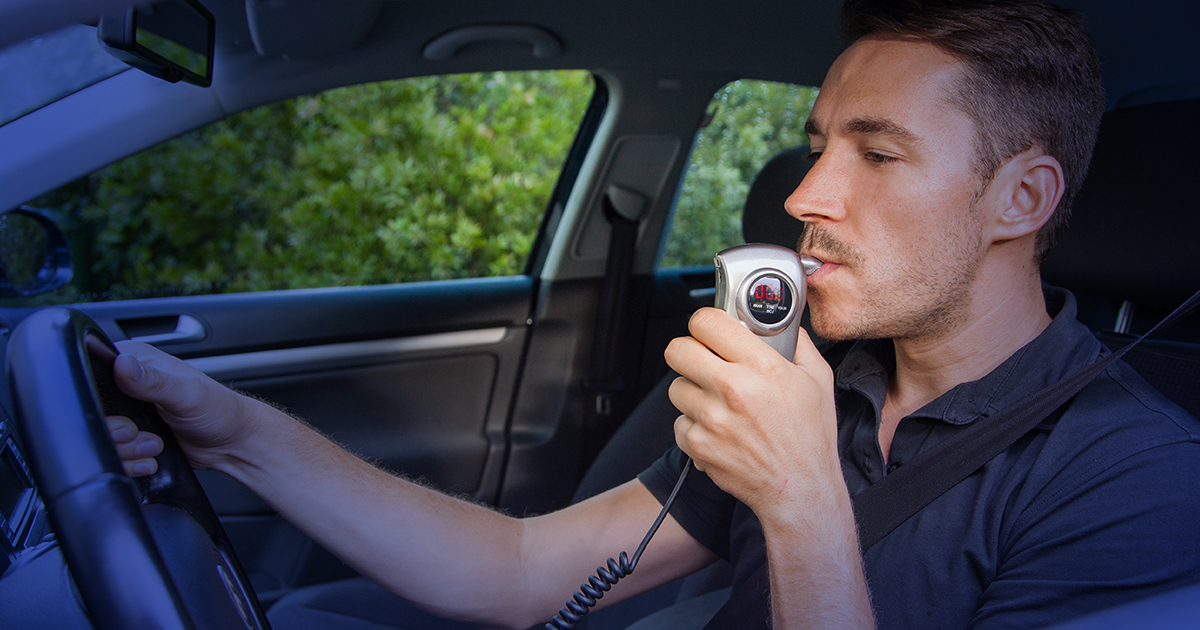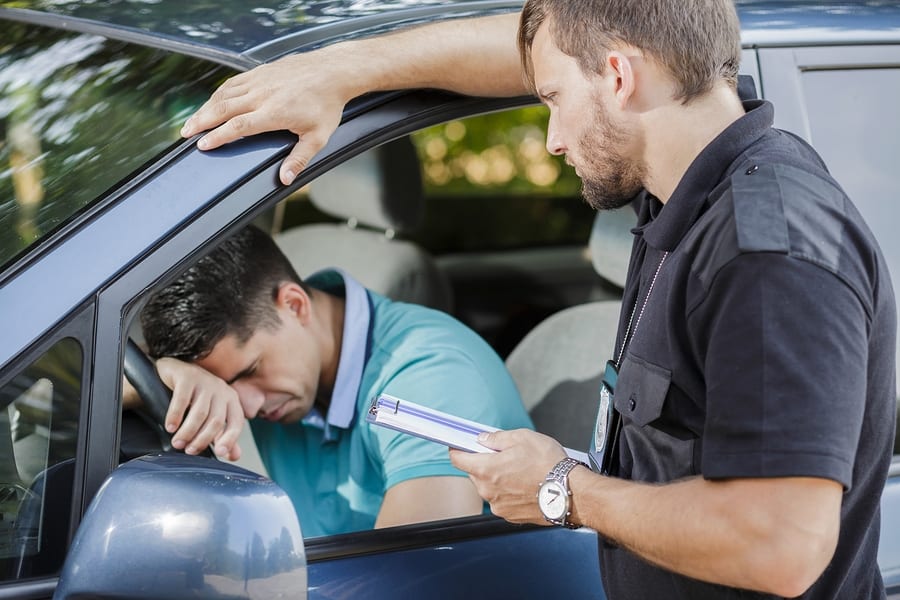A DUI breathalyzer in a car is a specialized device designed to prevent intoxicated individuals from driving. It requires the driver to pass a breathalyzer test before the ignition activates, acting as a deterrent against driving under the influence (DUI). In Texas, DUI offenses carry serious consequences due to their risks to public safety. Courts often mandate ignition interlock devices (IIDs) as a legal penalty for DUI convictions, making it essential to understand the implications of such requirements This guide serves as a beginner’s guide to understanding DUI breathalyzer in car offenses.
These devices help reduce repeat offenses. Studies indicate that individuals convicted of DUI have a higher likelihood of reoffending, particularly if no restrictions are imposed. A DUI breathalyzer in a car serves as a constant reminder of impaired driving consequences, encouraging individuals with prior convictions to reconsider driving under the influence.
Beyond individual repercussions, DUI-related accidents frequently result in severe injuries and fatalities. Texas law enforcement remains committed to minimizing these dangers by enforcing compliance with legal measures designed to enhance road safety. This guide explores how these devices function, the legal framework surrounding them in Texas, financial implications, and their impact on those required to use them.
How Does a DUI Breathalyzer in a Car Work?
A DUI breathalyzer in a car, formally called an ignition interlock device (IID), measures a driver’s blood alcohol concentration (BAC) before permitting the vehicle to start. These devices integrate into a vehicle’s electrical system and serve as a safeguard against intoxicated driving.

Step-by-Step Process of Using an IID
- Initial Breath Test:
Before starting the car, the driver must blow into the IID’s mouthpiece. The device then analyzes the breath sample to determine the BAC level, ensuring the driver is sober before enabling ignition. - BAC Verification:
If the BAC is below the preset threshold (usually 0.02% or lower in Texas), the IID unlocks the ignition system, allowing the vehicle to start. If the BAC exceeds the limit, the car remains inoperable, and the failed attempt logs in the system. - Rolling Retests:
To prevent drinking after passing the initial test, the IID requires periodic breath tests while the vehicle is in motion. If the driver fails, alarms may activate (such as honking or flashing lights), and authorities receive the data. - Data Logging and Reporting:
The IID records all breath test attempts, including pass/fail results and tampering attempts. This data transmits to relevant authorities such as probation offices, courts, or the DMV for compliance monitoring. - Tamper-Prevention Mechanisms:
Modern IIDs incorporate additional security features to prevent circumvention or fraudulent attempts to bypass the system. These features include:- Cameras: Capture images of individuals providing breath samples to confirm identity.
- GPS Tracking: This feature helps authorities track the location of the vehicle in case of violations or non-compliance.
- Temperature & Humidity Sensors: These ensure that the breath sample is coming from a human rather than an artificial source.
Failure to comply with IID requirements can result in additional penalties, such as extended sentencing, increased fines, or further license suspension. In extreme cases, a violation can even result in imprisonment.
When is a DUI Breathalyzer in a Car Required in Texas?
Texas enforces some of the strictest DUI laws in the United States. Courts often mandate IID installation for DUI offenders based on the severity of the offense, prior convictions, and specific case circumstances. Below is a breakdown of IID requirements in Texas based on the number of offenses:
First Offense DWI
- If BAC is 0.15% or higher, the judge must order IID installation.
- If the offender is granted a probationary license, an IID may be required as a condition of probation.
- Even if the BAC is below 0.15%, a judge may exercise discretion and impose an IID requirement based on other circumstances surrounding the offense.
Second Offense DWI
- IID installation is mandatory for at least one year.
- Even after the license suspension period ends, the IID may be required for additional months as part of post-conviction monitoring.
- Courts may impose additional penalties such as community service, alcohol rehabilitation programs, and extended probation periods.
Third Offense DWI or More
- IID installation is mandatory for at least two years after reinstating the driver’s license.
- If classified as a habitual offender, the driver may face a permanent IID requirement as a condition of continued driving privileges.
- Additional penalties may include steep fines, extended license suspensions, or even permanent revocation of driving privileges.
DWI with a Minor Passenger
For individuals convicted of DUI while transporting a minor (a child under 15 years old), Texas courts impose even stricter IID requirements. Given the increased danger posed by such actions, these cases often result in longer IID installation mandates, harsher penalties, and potentially felony-level charges.
Additional Considerations for IID Users
- Costs: IID installation and maintenance costs are paid by the offender and can range from $70 to $150 per month, in addition to installation fees.
- Calibration Requirements: Most IIDs require monthly or bi-monthly calibration at a certified service center to ensure accuracy and compliance.
- Restricted Licenses: Some individuals may qualify for a restricted interlock license, allowing them to drive only vehicles equipped with an IID while serving their suspension period.
By enforcing strict IID regulations, Texas aims to reduce repeat DUI offenses and improve roadway safety. While the IID requirement can be inconvenient, it serves as an effective deterrent and a crucial safeguard for preventing intoxicated driving.
The Costs and Impact of a DUI Breathalyzer in a Car in Texas
Driving under the influence (DUI) or driving while intoxicated (DWI) carries severe legal consequences in Texas, one of which may include the mandatory installation of an ignition interlock device (IID). This device is designed to prevent individuals from operating a vehicle while intoxicated by requiring a breath sample before starting the engine. While an IID serves as a safeguard against repeat offenses, it also imposes a significant financial and personal burden on individuals required to use it.

Financial Burden of a DUI Breathalyzer in a Car
The cost of a court-mandated IID varies based on provider, device type, and court requirements. Below are common expenses:
- Installation Fee:
The one-time installation fee typically ranges from $75 to $150, depending on the provider and vehicle type. - Monthly Monitoring Fee:
To ensure compliance, IIDs require regular monitoring, which incurs a monthly fee between $60 and $100. - Removal Fee:
Once the required period of IID use is over, a removal fee of $50 to $100 is usually charged. - Calibration & Maintenance Fees:
Many providers require periodic recalibrations, typically every 30 to 60 days, at a cost of $20 to $50 per visit. - Total Annual Cost:
Over a 12-month period, the total cost of maintaining an IID can range between $1,000 and $1,500, in addition to any court-imposed fines, attorney fees, and increased insurance premiums.
These costs can be financially overwhelming, especially for individuals who may already be facing employment challenges due to their DUI conviction.
Impact of a DUI Breathalyzer in a Car on Daily Life
Having an IID installed is not just a legal requirement—it comes with lifestyle changes and emotional challenges. Individuals must provide a breath sample every time they start their vehicle, and in some cases, rolling retests are required while driving. These frequent interruptions can be frustrating and stigmatizing.
Real-Life Example: John’s Story
John, a 35-year-old from Houston, was convicted of DWI after celebrating his promotion with drinks. He never anticipated that one night of partying would result in a criminal record, fines, and an IID requirement. Initially, John felt embarrassed and frustrated by the device, but over time, he realized that it prevented him from making another life-altering mistake. Today, John acknowledges that the IID helped him develop better drinking habits and decision-making skills.
What Happens If You Fail a Breathalyzer Test While Driving?
If a driver fails the breathalyzer test, the consequences depend on the circumstances:
- Initial BAC Failure: The vehicle will not start if the driver’s blood alcohol concentration (BAC) is above the allowed limit.
- Rolling Retest Failure: If a rolling retest is failed while driving, the IID will trigger alarms, alerting the driver to pull over. Some devices may also notify law enforcement authorities.
- Multiple Failures: Repeated failures can lead to extended IID usage, probation violations, and even potential jail time.

Final Thoughts: A Necessary Measure or an Unfair Burden?
While many people view an IID as an inconvenience, it serves an essential role in reducing alcohol-related accidents and preventing repeat offenses. Texas enforces IID requirements strictly to protect both offenders and the general public from potentially fatal drunk-driving incidents.
For individuals who must use an IID, the initial adjustment period can be frustrating. However, over time, many drivers acknowledge that the device helps them develop healthier habits and avoid making life-altering mistakes. The experience often serves as a wake-up call, prompting individuals to reflect on their choices and recognize the importance of responsible drinking.
Additionally, compliance with IID regulations can demonstrate responsibility to courts, employers, and even family members. Successfully completing an IID program can be a stepping stone toward license reinstatement, lower insurance premiums, and rebuilding trust with loved ones.
While the financial burden and daily inconveniences of an IID are undeniable, its role in saving lives and preventing legal recurrences cannot be overlooked. If you or someone you know is required to install an IID, taking the process seriously and embracing it as a learning opportunity can lead to positive long-term changes and a safer driving future.


